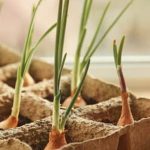Introduction
Creating a vegetable garden with a seed kit is the perfect way to get outside and enjoy nature while bringing fresh produce to your next meal. It’s an exciting challenge for gardeners of all levels and can provide hours of entertainment throughout the process. Growing a vegetable garden with a seed kit requires more than just throwing seeds in soil though – you will need to select the right location, purchase quality soil, and consider what vegetation you want to grow before diving in.
Once you have chosen your desired location, keep in mind that the space needs ample sunlight and good air circulation – these are essential conditions for wonderful harvest results. You should then test your soil by having it tested locally or using home testing kits; fertilizing or amending your soil accordingly also assists with providing productive results for any vegetable garden.
Next, use your seed kit to determine what type of vegetation will be planted based on their planting date requirements and corresponding seed timing per species. With good consultation from experts or reference materials, you can figure out what works best for what time of year you plan to start gardening. Knowing that different vegetables have different needs in terms of water, fertilizer, or types of soils will help maximize the yield from your effort! Finally planting the seeds according to directions provided within the kit ensures healthy growth over a successful crop cycle. With dedication and patience yielded over time you are sure to be proud of your own vegetable garden!
Types of Kits Available and Their Benefits
There are a variety of vegetable garden seed kits available on the market today. These kits provide an excellent opportunity for beginner gardeners who want to start growing their own vegetables. They often include everything needed to get started such as seeds, starter pots and containers, soil, fertilizer, and instructions for planting and caring for your plants.
Some vegetable garden seed kits offer specific varieties of vegetables such as tomatoes or zucchini, while others are designed to provide a variety of vegetables like beans, cucumbers, peppers, carrots, etc. Whatever type of kit you choose will give you far more success than trying to grow your vegetables from just regular store bought seeds which may not possess the same hardiness to survive in your climate.
Growing your own vegetables with a seed kit is both fun and economical. You can save money by not having to buy fresh produce at the store in addition to enjoying the satisfaction of harvesting crops you have nurtured from infancy. Furthermore, these seed kits enable you to experiment with different types of vegetables that may not even be available in your grocery store. Plus any excess vegetables from your harvest can be preserved through freezing or canning so you’ll never have too many left over!
Additionally, many vegetable seed kits come with multiple levels of difficulty catered towards different skill levels so even novices can enjoy the experience without feeling overwhelmed by it all at once. The beauty about kit gardening is that it alleviates much of the guesswork regarding appropriate soil composition and proper growing techniques; thereby giving beginners ease and confidence during their first go around as well as allowing them access to organic produce they can trust!
How to Choose the Right Kit for You
When selecting a vegetable garden seed kit, it is important to take some factors into consideration. Depending on your gardening needs and the size of your garden, you may need to decide between a variety of different kits. For example, if you have limited gardening space, a smaller starter kit could be the perfect choice for you. On the other hand, if you are looking to plant more than one type of vegetable or an entire family garden, then an all-in-one larger kit may be preferred.
Additionally, consider researching what types of seeds are included in each kit and any special requirements they may require to grow properly. If certain vegetables require more sunlight or water than others, this is something that should be taken into consideration when making your selection. Similarly, it’s helpful to pay attention to the instructions listed on each seed package as they provide important information regarding planting depth and spacing as well as additional directions such as soaking seeds before planting. This can help ensure that all the vegetables have optimal growing conditions for healthy growth and productivity!
Getting the Most out of Your Vegetable Garden Seed Kit
When it comes to gardening, having success with your vegetable garden seed kit is all about the preparation. Before you even think of starting to sow your seeds, the most important thing to do is to prepare the soil for planting. You should be sure to remove any debris and till the soil for optimal aeration. If necessary, add some compost or fertilizer to ensure a nutrient-rich environment for your plants.
Once your soil is ready, carefully read through the instruction booklet that came with your seed kit in order to learn when and how best to sow each type of seed. Depending on the variety of vegetables you are planting, some may have special needs and thus specific instructions. Take this into account and take adequate measures during sowing time. Additionally, apply appropriate levels of water according to each particular plant’s needs in order to keep them thriving throughout their growing cycle.
Finally, it’s always important to pay attention to individual details such as applying mulch and protecting plants from pests or harsh weather conditions, remembering that each vegetable has different demands in these areas as well. Following these steps and tips should give you an extra advantage when cultivating your own vegetable garden with a seed kit!
A Step-by-Step Guide for Planting and Growing Your Vegetable Garden
This Vegetable Garden Seed Kit includes everything you need to get your vegetable garden up and running in no time. Inside this kit, you’ll find a step-by-step guide for planting and growing your vegetable garden. It will walk you through preparing the soil, selecting what vegetables to grow, when and how to plant, caring for the plants throughout their growth process all the way to harvesting your produce. You’ll also find all the necessary supplies such as biodegradable pots, seedling trays, plant labels, topsoil mix and of course a selection of high-quality seeds so you can start planting right away. Additionally, detailed instructions are included for proper storage and storage of your vegetable garden’s harvest so you can enjoy it for months to come. With help from this Vegetable Garden Seed Kit and a passion for growing fresh vegetables in your own backyard, you’ll be harvesting delicious produce in no time!
Tips for Growing Successful Vegetables
A vegetable garden seed kit is an ideal way to start your own vegetable garden. With this helpful tool, you can begin growing vegetables in no time! However, there are some tips that you should follow when creating your own garden to ensure its success.
First, it’s important to pick a sunny location for your vegetable garden. Make sure the area receives at least six hours of sunlight per day so that your plants will be able to do their best. Additionally, the soil needs to be well-draining with a pH range between 6 and 8 for the most optimal growing environment.
Next, it’s vital to water regularly and deeply. The roots of plants need enough water in order to thrive, so you need to make sure that they’re getting enough without overwatering them or making them vulnerable to disease as a result of too much water.
Fertilizer is also necessary for healthy growth; look for fertilizer blends specifically formulated for vegetable gardens. This will help give your plants all the nutrients they need while avoiding excesses or deficiencies of any particular element. It’s always worth reading the label on any fertilizer before use as some elements may be toxic or inhibit plant growth – always err on the side of caution!
Finally, regular weeding is essential; weeds compete with vegetables for resources like space, light and water and can quickly take over plots if left unchecked – so keep an eye out! Ultimately, it takes effort and hard work to have a successful vegetable garden – but with these tips from a seed kit you should have all the tools needed for success!
Commonly Asked Questions about Vegetable Garden Seed Kits
Q: Are there any special instructions for planting the seeds in a vegetable garden seed kit?
A: Yes, most vegetable garden seed kits will come with instructions on how to properly plant and care for the included seeds. The instructions usually include suggested growing conditions, such as temperature, soil type, drainage, light exposure and necessary nutrients. Additionally, you may be required to soak or pre-treat the seeds before planting them and instructed on when and how to properly water your plants. It is important to carefully read all specified instructions that come with your vegetable garden seed kit.
Conclusion
Choosing the right vegetable garden seed kit for your garden is an important decision. It can mean the difference between having a thriving, delicious vegetable garden and a disappointing one. When you’re looking for the right seed kit, consider your size and location, as well as the type of vegetables you want to grow. Consider getting heirloom or organic seeds where possible—these will provide more robust flavor in comparison to hybrid or chemically-treated seeds. Finally, make sure that the seed kit comes with all of the necessary items to ensure a successful crop: soil, fertilizer, concise planting instructions, and other helpful tips. With careful research and thought given to these issues, you’ll have no trouble finding the perfect vegetable garden seed kit for you!

If you’re looking to get into vegetable gardening, or are just looking for some tips on how to make your current garden better, then you’ve come to the right place! My name is Ethel and I have been gardening for years. In this blog, I’m going to share with you some of my best tips on how to create a successful vegetable garden.





